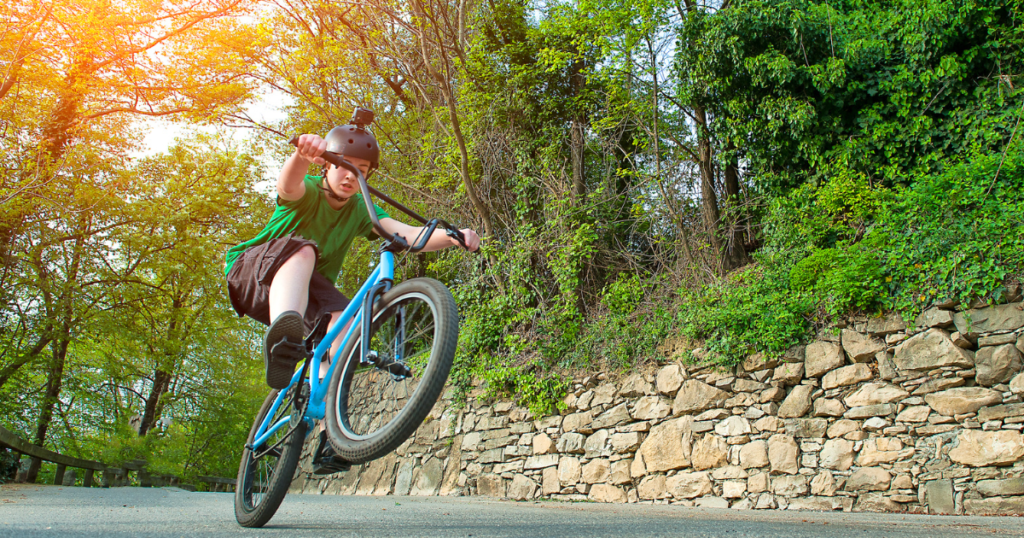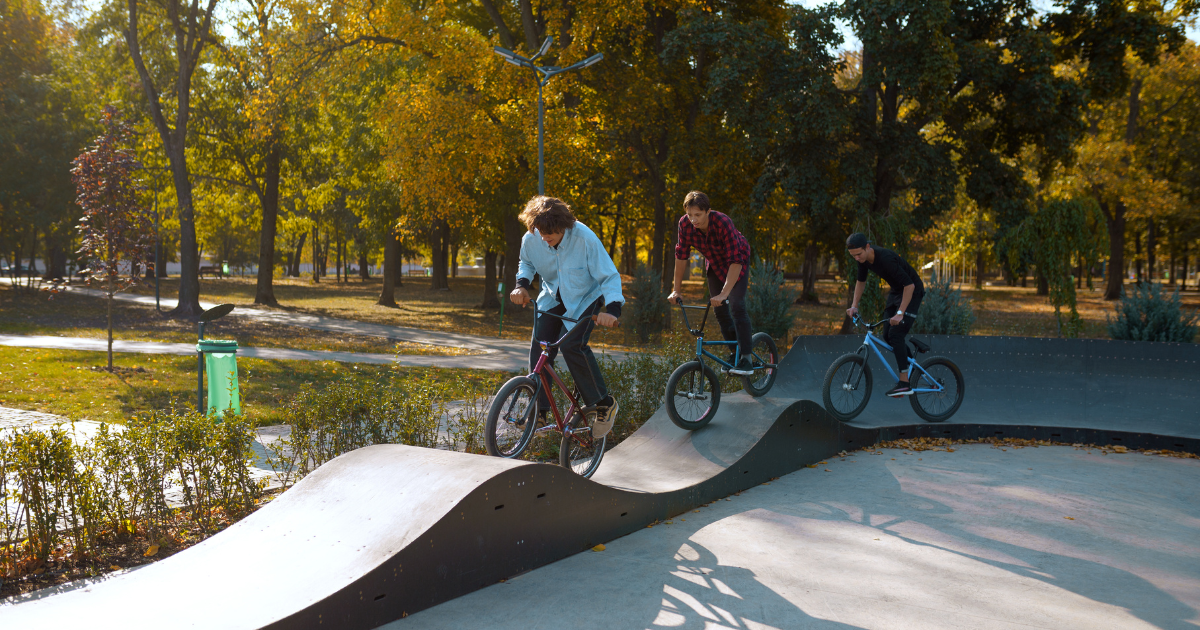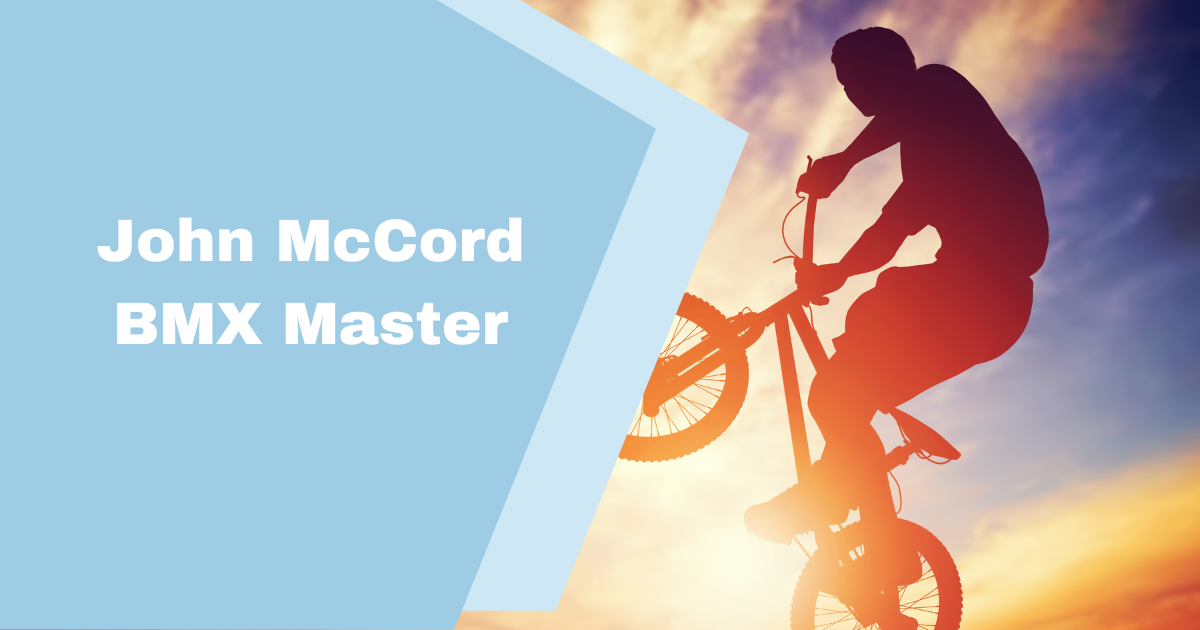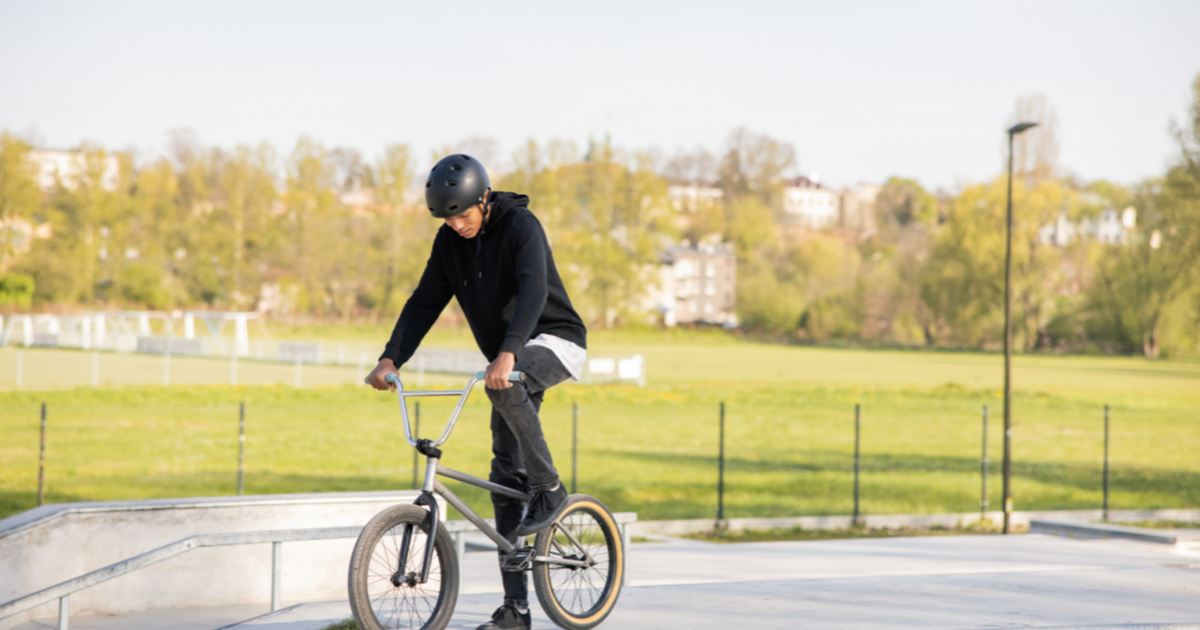Ready to experience the adrenaline rush that only a BMX bike can provide? If you’re wondering just how fast these nimble and versatile machines can go, you’ve come to the right place. Strap on your helmet and get ready to ride as we explore the thrilling world of BMX speed. Whether you’re a seasoned pro or new to the sport, this article will shed light on why BMX bikes are fast, what factors determine their top speeds, and how you can make your own two-wheeled rocket even faster. Buckle up – it’s time to hit the pedals!
Why Is A BMX Bike Fast?
BMX bikes are renowned for their remarkable speed and agility on both the streets and in skate parks. But have you ever pondered what attributes contribute to their exceptional velocity? Let’s explore the factors that set BMX bikes apart from your ordinary bicycle and make them faster.
BMX bikes are designed with lightweight materials such as aluminum or chromoly steel. This reduces unnecessary weight, allowing riders to accelerate quickly and maintain higher speeds. The lighter frame also gives riders more control over their movements, enabling them to maneuver effortlessly through tight corners and perform impressive tricks.
The compact size of a BMX bike is another factor that contributes to its speed. With smaller wheels (typically 20 inches), these bikes have less weight to rotate, which allows for quicker acceleration. Additionally, the shorter wheelbase enables tighter turns without sacrificing momentum.
In addition, BMX bikes are equipped with high-performance components such as narrow tires that have low rolling resistance and efficient drivetrains. These features ensure that power from the rider is transferred efficiently to forward motion, allowing for maximum speed potential.
Furthermore, the aggressive design of a BMX bike greatly influences its speed. The steep head angle contributes to stability at high speeds and also enables quick maneuverability for changing direction or executing tricks.
Experienced riders with exceptional bike handling skills have the ability to push their BMX bikes to higher speeds. By mastering techniques like pumping transitions and effectively utilizing pump tracks, these riders can achieve an extra burst of speed when necessary.
In summary, there are a few key factors that contribute to the speed of a BMX bike. Its lightweight design and compact size allow for quick acceleration and maneuverability. Additionally, high-performance components and agile geometry further enhance its speed and performance. So, the next time you witness a BMX bike whizzing by at an astonishing pace, remember that there is much more than meets the eye behind those seemingly small wheels!
How Fast Can a BMX Bike Go?
While BMX bikes are widely recognized for their exceptional agility and maneuverability, their top speed capability may come as a surprise. Unlike bikes built for long-distance rides, BMX bikes prioritize short bursts of speed and rapid acceleration over sustaining high speeds over extended distances.
The maximum speed that a BMX bike can reach is influenced by several factors, including the rider’s skill level, the condition of the terrain, and the type of bike being used. Generally, an experienced rider on a properly maintained BMX bike can achieve speeds of approximately 25–30 miles per hour (40-48 kilometers per hour) on level ground. It’s worth noting that reaching these speeds requires considerable effort and pedaling strength.
If you’re looking to make your BMX bike faster, there are several steps you can take. Consider upgrading your bike with lighter components such as carbon fiber forks or titanium handlebars. This will reduce overall weight and increase efficiency. Additionally, ensuring proper tire inflation and using slick tires can improve rolling resistance and maximize speed.

The body positioning while riding also plays a crucial role in speed. By assuming an aerodynamic stance with low handlebar height and a crouching position, you can reduce wind resistance and increase your velocity.
When comparing the top speed of a BMX bike to other types of bicycles, it becomes clear that there are significant differences due to variations in their design purposes. Road bikes, which are built for long-distance rides, often have higher gears that allow them to reach much higher speeds, sometimes exceeding 50 mph (80 km/h). On the other hand, mountain bikes are specifically designed for off-road trails and don’t require consistent high speeds. Instead, they prioritize stability during descents.
Ultimately, the true essence of riding a BMX bike lies in its versatility and ability to perform incredible tricks, rather than focusing on reaching breakneck speeds.
BMX bikes are built for fun and adrenaline-fueled excitement.
How To Make Your BMX Bike Faster:
Looking to enhance the speed of your BMX bike? Look no further! We’ve got you covered with these simple and effective tips that will have you zooming on your two-wheeled machine in no time.
Step 1
The first step in keeping your bike running smoothly and efficiently is to make sure it’s in optimal condition. Regular maintenance is crucial for this. Start by checking the tire pressure, lubricating the chain, and tightening any loose bolts or screws.
Step 2
Next, consider upgrading certain components of your bike. Investing in lightweight parts such as a carbon fiber frame or titanium handlebars can significantly reduce weight and increase speed. Additionally, high-quality bearings and a responsive braking system can improve overall performance.
Step 3
Improving speed also relies on mastering proper technique while riding. It’s essential to practice efficient pedaling techniques for maximizing power output with each stroke. Additionally, experimenting with different gear ratios can help find the optimal balance between acceleration and top speed.
Remember to consider aerodynamics when cycling. To minimize wind resistance, it’s important to position your body on the bike correctly. By tucking down low behind the handlebars, you can achieve optimal aerodynamic efficiency.
By following these steps and continually improving your skills, you will be on your way to testing the boundaries of BMX bike speed!
Comparing BMX Bike Top Speed with Other Bikes
While BMX bikes may not reach the same top speeds as road or racing bikes, their purpose lies elsewhere. BMX bikes are specifically designed for agility, control, and performing tricks. Nonetheless, it remains intriguing to compare their top speeds with those of other bicycle types.
Road bikes are renowned for their exceptional speed and efficiency when navigating paved surfaces. Equipped with lightweight frames and slender tires that minimize rolling resistance, road bikes can achieve impressive top speeds. In fact, on level terrain or downhill descents, these bicycles have been recorded traveling at speeds exceeding 50 miles per hour!
In contrast, mountain bikes excel in rough and rugged off-road terrains. While they may not reach the same high speeds as road bikes, their heavier frames and wider tires give them better traction on uneven surfaces (even though it creates more resistance), allowing mountain bikers to still reach impressive top speeds.
Now, let’s shift our focus to BMX bikes. These compact marvels were initially designed to perform daring stunts and impressive tricks inspired by motocross, as opposed to achieving remarkable speed. With their robust frames built for enduring jumps and impacts, these bicycles are known for their toughness. Consequently, the gearing ratios on these bikes prioritize quick acceleration rather than maximizing top speed.
Although a skilled cyclist on a BMX bike can achieve speeds of around 25-30 miles per hour on a straight path or downhill with vigorous pedaling, it’s crucial to remember that these legendary freestyle bikes are designed with other purposes in mind.
Comparing the top speed of different types of bicycles reveals fascinating insights into their varying purposes and designs. While BMX bikes may not win any races against specialized high-speed models like road or racing bicycles, they offer an exhilarating experience through skillful maneuvers rather than pure velocity alone!
What Makes a BMX Bike Faster?
The weight of a bike greatly affects its speed. A lighter BMX bike enables riders to accelerate rapidly and maintain higher speeds with less exertion. To achieve this, manufacturers utilize lightweight materials like aluminum or carbon fiber that reduce the overall weight of the bike while still maintaining its strength and durability.
The gearing system of a BMX bike directly impacts its maximum speed. Bikes with higher gear ratios offer more power per pedal stroke, allowing riders to achieve higher speeds. To suit their individual preferences and riding styles, riders can adjust their gear ratios by changing either the chain rings or cogs on their bikes.
The speed of a BMX bike is also influenced by the selection of tires. Wider tires provide better stability and traction, but they may reduce acceleration due to increased rolling resistance. Conversely, narrower tires decrease rolling resistance for improved speed but sacrifice some grip.
In addition, maintaining your BMX bike properly is vital for keeping it fast. It’s important to regularly clean and lubricate all the moving parts to ensure smooth operation and peak performance.
Rider skill also contributes to how fast a BMX bike can go. Experienced riders who possess good technique, balance, and control can maximize their speed potential on any type of terrain.

To conclude, there are several factors that contribute to increasing the speed of a BMX bike. The key elements include having a lightweight bike, choosing the right gear ratio, selecting tires based on riding conditions and preferences, practicing regular maintenance, and using skilled riding techniques. By considering these aspects, riders can achieve maximum velocity during their rides.
Are BMX Bikes Fast?
Do BMX bikes ride fast? This is a common question that arises when discussing the performance of these agile and compact bicycles. However, the answer is not as simple as it seems.
It’s important to keep in mind that speed can be subjective. While BMX bikes might not achieve the same top speeds as road or mountain bikes, they are specifically designed for a different style of riding. BMX bikes excel in quick bursts of acceleration and maneuverability rather than maintaining sustained high speeds.
The design of a BMX bike, with its lightweight frame and smaller wheels, enables riders to accelerate and maneuver easily. This makes them perfect for performing tricks and stunts in skate parks or on street obstacles. The emphasis is placed on agility, control, and technical skill rather than pure speed.
However, that doesn’t imply BMX bikes lack speed. Skilled riders are capable of achieving impressive speeds on straightaways or downhill sections, pushing themselves to their limits while maintaining full control over their bike.
The speed of a BMX bike is influenced by multiple factors, including the skill level of the rider, the condition of the terrain, and choices related to gear ratios and tires. For instance, slicker tires tend to provide a faster roll. Achieving optimal speed requires finding a balance between power output and control.
When considering the speed of BMX bikes, it’s important to remember that speed is relative. While they may not reach the top speeds of specialized racing machines, BMX bikes excel in their own way. They are perfectly designed for delivering thrilling experiences through explosive bursts of movement on two wheels.
Conclusion
In the world of BMX biking, speed plays a crucial role for riders. While BMX bikes may not reach the high speeds of road or mountain bikes, they are specially designed to prioritize agility and rapid acceleration. The top speed that a BMX bike can achieve varies depending on factors like the rider’s skill level, the terrain they’re riding on, and the components of their bike.
If you want to increase the speed of your BMX bike, there are a few steps you can take. First, make sure that your bike is properly maintained. This means keeping the tires inflated and the chain well lubricated. Additionally, consider upgrading specific components of your bike, such as getting lightweight wheels or high-quality bearings. These upgrades can help improve your bike’s overall speed.
When comparing top speeds, BMX bikes generally have lower maximum velocities compared to road and mountain bikes. However, the true speed of a BMX bike is determined by its agility in handling tight turns and executing tricks effortlessly.
If you’re wondering about the speed of BMX bikes, the answer is yes – they are definitely fast! While their top speeds may not be as high as other types of bicycles, BMX bikes are known for their agility and versatility. They are perfect for riders who enjoy thrilling jumps, spins, and flips.
When it comes to biking, speed is undoubtedly exciting. However, it’s imperative to prioritize safety above all else. So hop on your dependable bike, with its trusty two wheels, and experience the exhilaration that comes with riding a fast-paced BMX bike – all while keeping safety at the forefront of your mind!
FAQs:
1. How fast can a BMX bike go?
The maximum speed of a BMX bike can vary due to factors like the rider’s abilities, the type of terrain, and the specific model of the bike. In general, experienced BMX riders can achieve speeds ranging from 15 to 30 miles per hour.
2. Why is a BMX bike fast?
BMX bikes are specifically crafted for speed and agility. With their smaller frames and wheels in comparison to other bicycle types, riders can accelerate rapidly and maneuver sharp turns effortlessly. Furthermore, BMX bikes often incorporate lightweight materials that minimize wind resistance and optimize overall performance.
3. How can I make my BMX bike faster?
– Maintain optimal tire pressure: Ensure that your tires are inflated to the correct level, as this will reduce rolling resistance.
– Upgrading Components: If you’re looking to improve your bike’s performance, it may be worth considering investing in lighter parts such as aluminum handlebars or carbon fiber forks.
– Get fitter: By building strength and endurance through training, you can improve your ability to pedal faster and for longer durations.
4. Is a BMX bike faster than other types of bikes?
When it comes to speed on flat ground, traditional road or racing bikes generally surpass BMX bikes. This is because the aerodynamic designs and larger wheel sizes of road bikes contribute to their superior performance. However, when it comes to maneuverability on ramps, jumps, or off-road trails, BMX bikes reign supreme due to their exceptional agility.
5. What makes a BMX bike faster?
Several factors contribute to making a BMX bike faster:
– Lightweight frame: A lighter frame improves acceleration and responsiveness.
– High-quality bearings: Smooth-running bearings reduce friction for better speed.
Certain modern freestyle-oriented models now include aerodynamic features that enhance efficiency when cruising at high speeds.






2 thoughts on “How Fast Can A BMX Bike Go?”